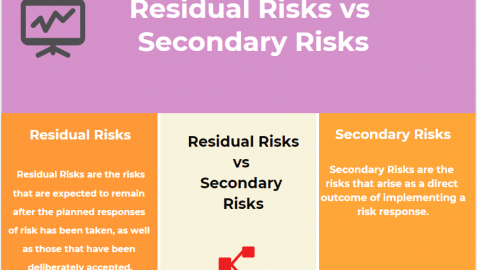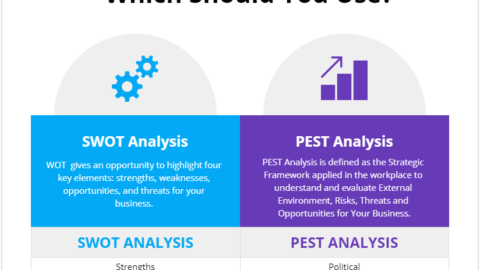A Comprehensive Guide to Control Objectives
Introduction
In today’s rapidly evolving business landscape, the importance of Control Objectives cannot be overstated. Whether you’re navigating through regulatory changes, technological advances, or operational complexities, control objectives provide a structured framework for achieving efficiency, compliance, and risk management. Also, this comprehensive guide covers everything you need to know about what control objectives are, their various types, how to formulate them, and how to maintain their efficacy.
Table of Contents

Control Objectives
What Are Control Objectives?
Control Objectives are specific, clearly defined goals aimed at achieving particular outcomes within an organization’s various functions and operations. Also, these objectives offer a roadmap for the implementation of controls that align with the broader business strategy, operational requirements, and regulatory compliance. Also, understanding what control objectives are can provide an organization with valuable insights into achieving operational excellence and risk mitigation.
Key Takeaways
- Definition and Importance: Control objectives are clearly defined goals designed to guide an organization in risk management, operational efficiency, and compliance. Also, they serve as the backbone of a robust internal control system.
- Types of Control Objectives: They can be categorized mainly into Operational, Compliance, Reporting, and Strategic objectives. Also, each serves a specific purpose and area of focus.
- Alignment with Business Goals: Control objectives should be tightly aligned with the broader business objectives to ensure that the organization moves cohesively toward its goals.
- Regulatory Compliance: It’s crucial to frame control objectives that help the organization adhere to local, state, and federal regulations, as well as industry-specific standards.
Types of Control Objectives
In a business environment, control objectives can generally be categorized into four main types:
Operational Objectives
These focus on the day-to-day operations of a business. Operational Objectives often aim to improve efficiency and effectiveness. For example, reducing the production cycle time in a manufacturing plant could be an operational control objective.
Compliance Objectives
Here, the primary focus is on ensuring that the organization adheres to external laws and regulations. Also, compliance Objectives might involve making sure that all corporate taxes are paid on time to prevent legal penalties.
Reporting Objectives
These objectives are centered on the accuracy, completeness, and timeliness of reporting mechanisms, often related to financial reporting. An example of a Reporting Objective could be to improve the accuracy of quarterly financial reports.
Formulating Objectives: A Step-by-Step Approach
Understanding Business Objectives
The first step in formulating effective objectives is understanding the broader business objectives. Also, these serve as a guiding light for the specific aims that the objectives should accomplish. Also, if a business’s overarching goal is customer satisfaction, a related objective might aim to minimize product defects or improve customer service response times.
Regulatory Compliance
Another crucial factor in setting up control objectives is understanding the legal and regulatory landscape in which the business operates. Existing laws and standards often serve as ready-made templates for control objectives. For example, businesses can use ISO standards as a guideline for formulating quality-related control objectives.
Monitoring and Evaluation
Regular monitoring and evaluation of control objectives are crucial for their continued efficacy. Also, businesses should employ both periodic audits and continuous monitoring techniques to assess the performance of their control objectives.
Example 1: Financial Institution
Objective: “Ensure the integrity and confidentiality of customer financial data.”
- Control Method: Implement firewalls, encrypted data storage, and multi-factor authentication.
- KPIs: Number of security incidents, customer complaints regarding data issues, and results of security audits.
- Red Flag: Increasing frequency of unauthorized access attempts.
- Future-Proofing: Regularly update cybersecurity measures, conduct staff training on emerging threats.
Example 2: Logistics Company
Objective: “Reduce delivery times by 10% over the next quarter.”
- Control Method: Introduce route optimization software and hire additional delivery staff.
- KPIs: Average delivery time, customer feedback on delivery time, percentage of late deliveries.
- Red Flag: If average delivery time does not decrease, or even increases.
- Future-Proofing: Explore technological advancements like drone deliveries for future implementation.
Example 3: Pharmaceutical Company
Objective: “Ensure 100% compliance with FDA drug testing protocols.”
- Control Method: Implement stringent quality checks and detailed documentation of all testing procedures.
- KPIs: Number of quality issues flagged, results of internal and external compliance audits.
- Red Flag: Any non-compliance issues or failed audits.
- Future-Proofing: Regularly review and update protocols according to FDA updates.
Example 4: Public Corporation
Objective: “Achieve 100% accuracy in quarterly financial reporting to stakeholders.”
- Control Method: Employ double-entry bookkeeping, and conduct third-party auditing.
- KPIs: Accuracy of financial statements, auditor reports, and frequency of corrections.
- Red Flag: Frequent corrections to previously published financial reports.
- Future-Proofing: Implement automated accounting systems that are compliant with evolving financial regulations.
Example 5: Online Retailer
Objective: “Expand customer base by 25% within the next fiscal year.”
- Control Method: Implement targeted marketing campaigns, customer satisfaction surveys, and loyalty programs.
- KPIs: Customer acquisition rates, customer retention rates, and return on marketing investment.
- Red Flag: Stagnant or decreasing customer acquisition and retention rates.
- Future-Proofing: Invest in AI to analyze consumer behavior and personalize marketing.
Hello, I’m Cansu, a professional dedicated to creating Excel tutorials, specifically catering to the needs of B2B professionals. With a passion for data analysis and a deep understanding of Microsoft Excel, I have built a reputation for providing comprehensive and user-friendly tutorials that empower businesses to harness the full potential of this powerful software.
I have always been fascinated by the intricate world of numbers and the ability of Excel to transform raw data into meaningful insights. Throughout my career, I have honed my data manipulation, visualization, and automation skills, enabling me to streamline complex processes and drive efficiency in various industries.
As a B2B specialist, I recognize the unique challenges that professionals face when managing and analyzing large volumes of data. With this understanding, I create tutorials tailored to businesses’ specific needs, offering practical solutions to enhance productivity, improve decision-making, and optimize workflows.
My tutorials cover various topics, including advanced formulas and functions, data modeling, pivot tables, macros, and data visualization techniques. I strive to explain complex concepts in a clear and accessible manner, ensuring that even those with limited Excel experience can grasp the concepts and apply them effectively in their work.
In addition to my tutorial work, I actively engage with the Excel community through workshops, webinars, and online forums. I believe in the power of knowledge sharing and collaborative learning, and I am committed to helping professionals unlock their full potential by mastering Excel.
With a strong track record of success and a growing community of satisfied learners, I continue to expand my repertoire of Excel tutorials, keeping up with the latest advancements and features in the software. I aim to empower businesses with the skills and tools they need to thrive in today’s data-driven world.
Suppose you are a B2B professional looking to enhance your Excel skills or a business seeking to improve data management practices. In that case, I invite you to join me on this journey of exploration and mastery. Let’s unlock the true potential of Excel together!
https://www.linkedin.com/in/cansuaydinim/










